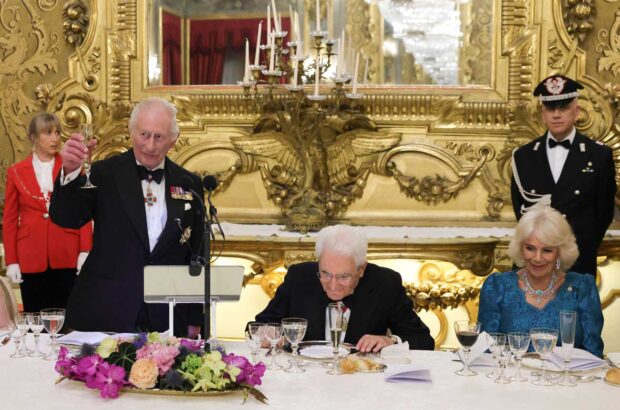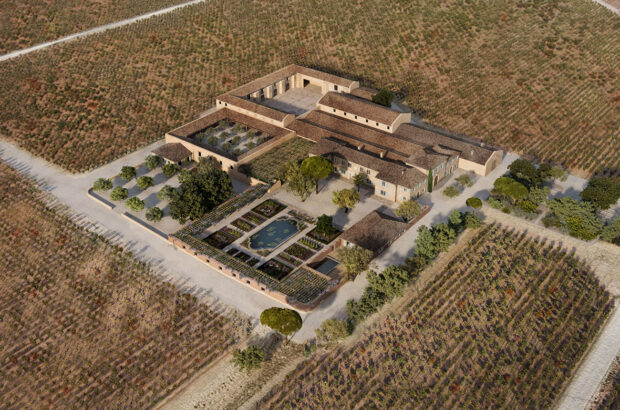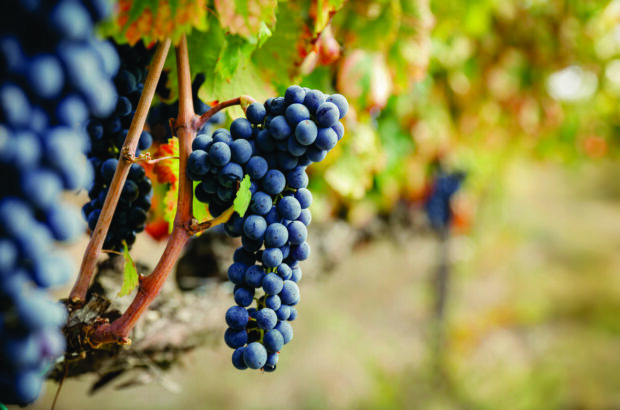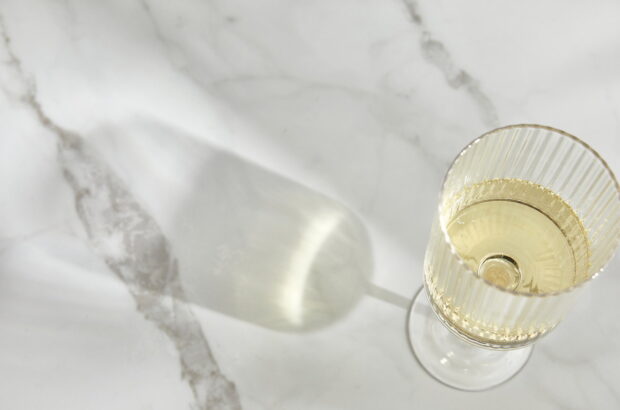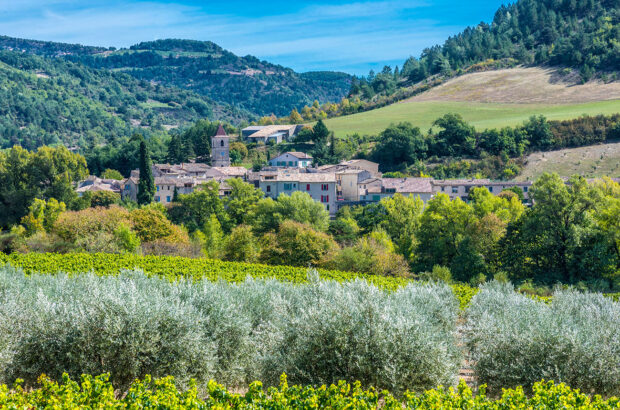In between still and spumante wine styles, frizzante used to be a staple of osterie and traditional trattorie in many regions of Italy. In Campania the bubbles softened the searing acidity of Asprinio; in the Oltrè Po they countered the harsh tannins of the Croatina grape; in Emilia they provided the perfect foil to the richness of the cuisine.
Frizzanti were traditionally made by simply bottling early with a little residual sugar and allowing the fermentation to finish in the bottle. Semi-industrial vat re-fermentation threatened to substitute artisan frizzante, but today it is making a robust comeback – ‘Pet-nat’ is trending.
One Italian online retailer lists over 200 ‘hand-made’ frizzanti, including examples from regions without a sparkling wine tradition, such as Sicily, Puglia and Sardinia.
Scroll down to see notes and scores for 10 Italian frizzante wines
{"content":"PC9wPgo8aDI+VGhlIHByb2Nlc3M8L2gyPgo8cD5JZiBpbiB0aGUgcGFzdCBib3R0bGUgcmUtZmVybWVudGF0aW9uIGNvdWxkIGJlIGEgaGFwaGF6YXJkIHByb2Nlc3MsIHRvZGF5IGl0IGlzIG1vcmUgY29udHJvbGxlZC4gVGhlcmUgYXJlIHR3byBiYXNpYyBzeXN0ZW1zLiBUaGUgZmlyc3QsIGEgdmFyaWF0aW9uIG9mIHRoZSB0cmFkaXRpb25hbCDigJg8ZW0+YW5jZXN0cmFsZTwvZW0+4oCZIG1ldGhvZCwgaXMgdG8gc2xvdyBkb3duIHRoZSBwcmltYXJ5IGZlcm1lbnRhdGlvbiBieSBrZWVwaW5nIHRoZSB3aW5lIGF0IGEgbG93IHRlbXBlcmF0dXJlIGJlZm9yZSBib3R0bGluZyBpdCB3aXRoIHRoZSBvcmlnaW5hbCBsZWVzIGFuZCB0aGUgcmVzaWR1YWwgc3VnYXIgbmVjZXNzYXJ5IHRvIGtpY2tzdGFydCB0aGUgZmVybWVudGF0aW9uLjwvcD4KPHA+PGRpdiBjbGFzcz0iYWQtY29udGFpbmVyIGFkLWNvbnRhaW5lci0tbW9iaWxlIj48ZGl2IGlkPSJwb3N0LWlubGluZS0yIiBjbGFzcz0iaXBjLWFkdmVydCI+PC9kaXY+PC9kaXY+PC9wPgo8cD5UaGUgYWx0ZXJuYXRpdmUgaXMgdG8gZmVybWVudCB0aGUgYmFzZSB3aW5lIGNvbXBsZXRlbHksIGFkZCB0aGUgZG9zYWdlIOKAkyB1c3VhbGx5IHVzaW5nIHNvbWUgdW5mZXJtZW50ZWQgbXVzdCBmcm9tIHRoZSBzYW1lIGdyYXBlcywgc3RvcmVkIGF0IGxvdyB0ZW1wZXJhdHVyZXMg4oCTIGFuZCB0aGVuIGJvdHRsZS4gVG8gYWxsIGludGVudHMgYW5kIHB1cnBvc2VzLCBpdOKAmXMgYSBzaG9ydCB0dXJuIGFyb3VuZCA8ZW0+bWV0b2RvIGNsYXNzaWNvPC9lbT4gKHRyYWRpdGlvbmFsIG1ldGhvZCkgd2l0aG91dCB0aGUgZGlzZ29yZ2VtZW50LjwvcD4KPHA+QW4gYXJ0aXNhbiBmcml6emFudGUgd2lsbCBoYXZlIGEgZGVwb3NpdCBhdCB0aGUgYm90dG9tIG9mIHRoZSBib3R0bGUsIGFuZCBpZiB5b3UgdGlwIGl0IGdlbnRseSB0byBwdXQgdGhlIGxlZXMgaW50byBzdXNwZW5zaW9uLCB5b3UgZ2V0IHRoZSBzbGlnaHRseSB2ZWlsZWQgbG9vayB3aGljaCBpcyB0aGUgaGFsbG1hcmsgb2YgdGhlIGNhdGVnb3J5LiBBIHdlbGwgbWFkZSBmcml6emFudGUgdGlja3MgYSBsb3Qgb2YgdGhlIGJveGVzIG9mIGNvbnRlbXBvcmFyeSBkcmlua2luZzogaXQgaXMgYm9uZS1kcnkgYnkgZGVmaW5pdGlvbiwgbG93IGluIGFsY29ob2wsIGFuZCBzZWR1Y3RpdmVseSBlYXN5IHRvIGRyaW5rLjwvcD4KPHA+SXQgaXMgbm90IGFsbCBhYm91dCA8ZW0+Z2xvdS1nbG91PC9lbT4sIGhvd2V2ZXIg4oCTIHdlIGFyZSBzZWVpbmcgYW4gaW5jcmVhc2luZyBudW1iZXIgb2Ygd2luZXMgd2l0aCBzcG9udGFuZW91cyBmZXJtZW50YXRpb24gYW5kIGV4dGVuZGVkIGxlZXMgY29udGFjdCwgbWFraW5nIGZvciBhIG1vcmUgY29tcGxleCB3aW5lIHdpdGggc3R5bGUtZGVmaW5pbmcgbm90ZXMgb2YgYXV0b2x5c2lzLjwvcD4KPGRpdiBjbGFzcz0iYWQtY29udGFpbmVyIGFkLWNvbnRhaW5lci0tbW9iaWxlIj48ZGl2IGlkPSJwb3N0LWlubGluZS0zIiBjbGFzcz0iaXBjLWFkdmVydCI+PC9kaXY+PC9kaXY+CjxwPlRoZSBwcmVyZXF1aXNpdGVzIGZvciB0aGUgYmFzZSB3aW5lIG9mIGFuIGFydGlzYW4gZnJpenphbnRlIGFyZSB0aGUgc2FtZSBhcyB0aG9zZSBmb3IgYSBtZXRvZG8gY2xhc3NpY28g4oCTIGhpZ2ggYWNpZGl0eSBhbmQgbG93IHN1Z2FyIOKAkyBidXQgaW50ZXJlc3RpbmdseSwgZnJpenphbnRlIGlzIGFsbW9zdCBleGNsdXNpdmVseSB0aGUgZG9tYWluIG9mIG5hdGl2ZSB2YXJpZXRpZXM6IEdsZXJhLCBHYXJnYW5lZ2EsIFZlcmRpc28gZnJvbSB0aGUgVmVuZXRvOyBSaWJvbGxhIEdpYWxsYSBpbiBGcml1bGktVmVuZXppYSBHaXVsaWE7IExhbWJydXNjbyBkaSBTb3JiYXJhLCB0aGUgc2VtaS1hcm9tYXRpYyBQaWdub2xldHRvIGFuZCB0aGUgc2hhcnAgYW5kIGp1aWN5IFNwZXJnb2xhIGZyb20gRW1pbGlhLVJvbWFnbmEuPC9wPgo8aDI+Qm90dG9tcyB1cDwvaDI+CjxwPlRoZSBiaWdnZXN0IGZyaXp6YW50ZSBwcm9kdWN0aW9uIGNvbWVzIGZyb20gdGhlIHByb3ZpbmNlIG9mIFRyZXZpc28gaW4gUHJvc2VjY28gY291bnRyeSwgd2hlcmUgdGhlIHN0eWxlLCBrbm93biBhcyDigJg8ZW0+Q29sIEZvbmRvPC9lbT7igJkgKGxpdGVyYWxseSDigJh3aXRoIGJvdHRvbeKAmSwgdGhlIGJvdHRvbSBiZWluZyB0aGUgbGVlcyBkZXBvc2l0IGF0IHRoZSBib3R0b20gb2YgdGhlIGJvdHRsZSkgcmVwcmVzZW50cyB0aGUgcnVyYWwgdHJhZGl0aW9uIGF0IHRoZSByb290cyBvZiB0aGUgd29ybGQmIzgyMTc7cyBmYXZvdXJpdGUgbW9kZXJuIGJ1YmJseS48L3A+CjxkaXYgY2xhc3M9ImFkLWNvbnRhaW5lciBhZC1jb250YWluZXItLW1vYmlsZSI+PGRpdiBpZD0icG9zdC1pbmxpbmUtNCIgY2xhc3M9ImlwYy1hZHZlcnQiPjwvZGl2PjwvZGl2Pgo8cD5UaGUgQ29sIEZvbmRvIHZlcnNpb24gb2YgUHJvc2VjY28gd2FzIGV4Y2x1ZGVkIGZyb20gdGhlIHVwZ3JhZGUgb2YgQ29uZWdsaWFubyBWYWxkb2JiaWFkZW5lIFN1cGVyaW9yZSB0byBET0NHIHN0YXR1cyBpbiAyMDA5LCBidXQgcmVpbnRyb2R1Y2VkIHdpdGggdGhlIG5ldyBuYW1lIG9mIOKAmDxlbT5TdWkgTGlldml0aTwvZW0+4oCZICjigJhvbiB0aGUgbGVlc+KAmSkgaW4gMjAxOS4gVGhlcmUgd2FzIGEgY2F0Y2gsIGhvd2V2ZXIg4oCTIHRoZSBTdWkgTGlldml0aSBjYXRlZ29yeSBvbmx5IGFwcGxpZXMgdG8gc3B1bWFudGUsIG5vdCB0byBmcml6emFudGUuPC9wPgo8cD5Db25zZXF1ZW50bHksIGEgbnVtYmVyIG9mIHByb2R1Y2VycyBoYXZlIHJlZnVzZWQgdG8gYWNjZXB0IHRoZSBuZXcgbGFiZWwgdG8gcmVtYWluIGZhaXRoZnVsIHRvIHRoZSB0cmFkaXRpb25hbCBzdHlsZSBvZiBDb2wgRm9uZG8sIGFuZCB1c2UgYSBjcm93biBjYXAgY2xvc3VyZSB0byB2aXN1YWxseSBkaXN0YW5jZSB0aGVtc2VsdmVzIGZyb20gU3VpIExpZXZpdGkuPC9wPgo8ZGl2IGNsYXNzPSJhZC1jb250YWluZXIgYWQtY29udGFpbmVyLS1tb2JpbGUiPjxkaXYgaWQ9InBvc3QtaW5saW5lLTUiIGNsYXNzPSJpcGMtYWR2ZXJ0Ij48L2Rpdj48L2Rpdj4KPHA+T3RoZXJzIGhhdmUgZW1icmFjZWQgdGhlIENvbmVnbGlhbm8gVmFsZG9iYmlhZGVuZSBET0NHIGZvciB0aGVpciBmcml6emFudGkuIERvIG5vdGUsIGhvd2V2ZXIsIHRoYXQgdGhlICYjODIxNjtTdXBlcmlvcmUmIzgyMTc7IG5hbWUgdXNlZCBmb3IgUHJvc2VjY28gc3B1bWFudGUgbWF5IG5vdCBiZSB1c2VkIGZvciBzdGlsbCBvciBmcml6emFudGUgd2luZXMuPC9wPgo8cD5Tb21lIG5hbWVzIHRvIGxvb2sgZm9yIGFyZTogPHN0cm9uZz5CZWxlIENhc2VsPC9zdHJvbmc+IGFuZCBCcmVzb2xpbiBmcm9tIEFzb2xvOyA8c3Ryb25nPkFkYW1pPC9zdHJvbmc+LCA8c3Ryb25nPkFudGljYSBRdWVyY2lhPC9zdHJvbmc+LCA8c3Ryb25nPkJlbGxlbmRhPC9zdHJvbmc+LCA8c3Ryb25nPk1hbGdhIFJpYmVsbGU8L3N0cm9uZz4sIDxzdHJvbmc+TWFsaWJyYW48L3N0cm9uZz4sIDxzdHJvbmc+TWlvdHRvPC9zdHJvbmc+IGFuZCA8c3Ryb25nPlNwYWdub2w8L3N0cm9uZz4gZnJvbSBDb25lZ2xpYW5vIFZhbGRvYmJpYWRlbmUuPC9wPgo8aDI+V2lsZCB2aW5lczwvaDI+CjxwPlRoZSBvdGhlciBmcml6emFudGUgc3Ryb25naG9sZCBpbiBJdGFseSBpcyBFbWlsaWEuIFRoZSByZXB1dGF0aW9uIG9mIExhbWJydXNjbyBwbHVtbWV0ZWQgY2F0YXN0cm9waGljYWxseSBhcyBhIHJlc3VsdCBvZiBpbmR1c3RyaWFsIHdpbmVtYWtpbmcgaW4gdGhlIDE5OTBzLCBidXQgaW4gcmVjZW50IHllYXJzIGl0IGhhcyBzdGFydGVkIDxhIGhyZWY9Imh0dHBzOi8vd3d3LmRlY2FudGVyLmNvbS9wcmVtaXVtL2xhbWJydXNjby1iYWNrLW1lbnUtNDA4MDQxLyIgdGFyZ2V0PSJfYmxhbmsiIHJlbD0ibm9vcGVuZXIgbm9yZWZlcnJlciI+PHN0cm9uZz50byByZWdhaW4gc29tZSBvZiBpdHMgcmlnaHRmdWwgZGlnbml0eTwvc3Ryb25nPjwvYT4uPC9wPgo8cD5NZXRvZG8gYW5jZXN0cmFsZSB3aW5lcyByZXByZXNlbnQgYSBkcm9wIGluIHRoZSBvY2VhbiBvZiBhbiBhdmVyYWdlIGFubnVhbCBwcm9kdWN0aW9uIGluIGV4Y2VzcyBvZiA1MCBtaWxsaW9uIGJvdHRsZXMgW0NvbnNvcnppbyBUdXRlbGEgTGFtYnJ1c2NvXSBidXQgdGhleSBjYXB0dXJlIHRoZSBhdXRoZW50aWNpdHkgb2YgYSBkZWxpY2lvdXNseSB6ZXN0ZnVsIGZvb2Qgd2luZS48L3A+CjxwPkxhbWJydXNjbyBjYW4gYmUgbWFkZSBmcm9tIGhhbGYgYSBkb3plbiB2ZXJ5IGRpZmZlcmVudCBncmFwZSB2YXJpZXRpZXMuIFRoZSBwYWxlIFNvcmJhcmEgaXMgdGhlIGJlc3Qga25vd24sIHRvZ2V0aGVyIHdpdGggdGhlIGRlZXAgcnVieSBhbmQgbGlnaHRseSB0YW5uaWMgR3Jhc3Bhcm9zc28gYW5kIHRoZSB3aWxkIGFuZCBicmFtYmx5IFNhbG9taW5vLCBidXQgdGhlcmUgYXJlIG51bWVyb3VzIHZhcmlhdGlvbnMgb24gdGhlIHRoZW1lIGluIGEgcmVnaW9uIG9mIGdyZWF0IGRpdmVyc2l0eS48L3A+CjxwPkluIGdlbmVyYWwgdGhlIHN0eWxlIGlzIGxlc3MgbGVlc3kgdGhhbiB0aGUgd2luZXMgb2YgdGhlIFZlbmV0bywgd2l0aCBtb3JlIGltbWVkaWF0ZSBmcnVpdC4gQWxvbmdzaWRlIHRoZWlyIGNoYXJtYXQgbWV0aG9kIExhbWJydXNjbywgdGhlIGZvbGxvd2luZyBwcm9kdWNlcnMgYWxsIG1ha2UgZXhjZWxsZW50IG1ldG9kbyBhbmNlc3RyYWxlIHdpbmVzOiA8c3Ryb25nPkJlbGxlaTwvc3Ryb25nPiwgPHN0cm9uZz5DYW50aW5hIFNvY2lhbGUgZGkgQ2FycGkgZSBTb3JiYXJhPC9zdHJvbmc+LCA8c3Ryb25nPkNhdmljY2hpb2xpPC9zdHJvbmc+LCA8c3Ryb25nPkNsZXRvIENoaWFybGk8L3N0cm9uZz4sIDxzdHJvbmc+Q2FtaWxsbyBEb25hdGk8L3N0cm9uZz4sIDxzdHJvbmc+Vml0dG9yaW8gR3Jhemlhbm88L3N0cm9uZz4gYW5kIDxzdHJvbmc+RXJtZXRlIE1lZGljaTwvc3Ryb25nPi48L3A+CjxoMj5TZXJ2aW5nIHN1Z2dlc3Rpb25zPC9oMj4KPHA+U2VydmluZyBhbmQgZHJpbmtpbmcgZnJpenphbnRpIGRlcGVuZHMgYSBsaXR0bGUgb24gdGhlIGdyYXBlIHZhcmlldHkgYW5kIHRoZSBjb250ZXh0LCBidXQgd2l0aCB0aGUgZXhjZXB0aW9uIG9mIExhbWJydXNjbyBkaSBTb3JiYWJyYSDigJMgd2hpY2ggZGVtYW5kcyBhbiBpY2UgYnVja2V0IOKAkyB0aGUgd2luZXMgYXJlIGJlc3QgY29vbCByYXRoZXIgdGhhbiBjaGlsbGVkLjwvcD4KPHA+QWZpY2lvbmFkb3MgZHJpbmsgQ29sIEZvbmRvIHdpdGggdGhlIGxlZXMgaW4gc3VzcGVuc2lvbiwgYnV0IGlmIHlvdSBwcmVmZXIgdGhlbSBjbGVhciB5b3UgY2FuIHN0YW5kIHRoZSBib3R0bGUgdXAgZm9yIGEgY291cGxlIG9mIGhvdXJzIGFuZCBwb3VyIGNhcmVmdWxseSwgb3IgZGVjYW50IGFuZCBsZWF2ZSB0aGUgc2VkaW1lbnQgaW4gdGhlIGJvdHRsZS48L3A+CjxkaXYgY2xhc3M9ImluamVjdGlvbiI+PC9kaXY+CjxwPlRoZSB3aGl0ZSB3aW5lcyBpbiBnZW5lcmFsIG1ha2UgYSBzdXBlcmIgYXBlcml0aWYsIGJ1dCBhIGJvdHRsZSBhbHNvIGRpc2FwcGVhcnMgaW4gYSB0d2lua2xpbmcgd2l0aCB0YXBhcyBvciB0aGUgY2ljY2hldHRpIG9mIFZlbmljZS4gTGFtYnJ1c2NvIGRpIEdyYXNwYXJvc3NhIGFuZCB0aGUgcmVkIGZyaXp6YW50aSBpbiBnZW5lcmFsIGFyZSBtYWRlIHRvIGRyaW5rIHdpdGggcmljaCBwYXN0YSBkaXNoZXMgKG5vdGhpbmcgYmVhdHMgdGhlbSB3aXRoIGxhc2FnbmEpIGFuZCBpZiB5b3UgZmluZCB5b3Vyc2VsZiBpbiBOYXBsZXMsIHRoZSBvbmx5IHRoaW5nIHRvIGRyaW5rIHdpdGggcGl6emEgaXMgYSBsaWdodCBhbmQgc3ByaXR6eSBBc3ByaW5pby48L3A+CjxwPgo="}
10 Italian frizzante wines to try:
{}
{"wineId":"83686","displayCase":"standard","paywall":true}
{"wineId":"83688","displayCase":"standard","paywall":true}
{"wineId":"83689","displayCase":"standard","paywall":true}
{"wineId":"83691","displayCase":"standard","paywall":true}
{"wineId":"83693","displayCase":"standard","paywall":true}
{"wineId":"46219","displayCase":"standard","paywall":true}
{"wineId":"83692","displayCase":"standard","paywall":true}
{"wineId":"83694","displayCase":"standard","paywall":true}
{"wineId":"83687","displayCase":"standard","paywall":true}
{"wineId":"83690","displayCase":"standard","paywall":true}
{}
Related articles



